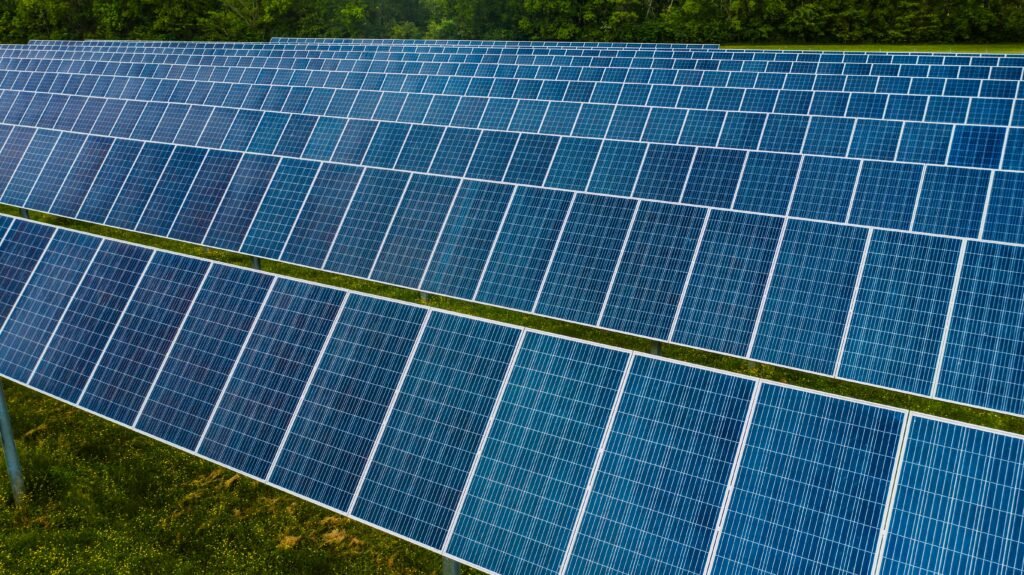The Surge in Renewable Energy Investments in India
India, the land of diverse landscapes and rich cultural heritage, is emerging as a powerhouse in the renewable energy sector. Over the past decade, the nation has witnessed an unprecedented surge in renewable energy investments, transforming its energy landscape. From the vast deserts harnessing solar power to the coastal regions capturing wind energy, India is setting a global example.
Why the World is Watching India’s Energy Sector
The world is keenly observing India’s renewable energy journey. As nations grapple with the pressing need to transition to sustainable energy sources, India’s proactive approach offers valuable insights. The country’s ambitious targets and strategic policies are not only reshaping its energy sector but also positioning it as a global leader in renewable energy.
India’s Renewable Energy Landscape
India boasts a diverse array of renewable energy sources. Solar power, with its vast potential, leads the charge, followed by wind energy, hydroelectric power, and biomass. Each source contributes uniquely to the country’s energy mix, making India a vibrant hub for renewable energy.
Overview of Renewable Energy Sources in India
Solar power dominates the renewable energy landscape in India, thanks to the country’s abundant sunlight. Wind energy, particularly in states like Tamil Nadu and Gujarat, plays a crucial role. Hydroelectric power, primarily from the Himalayan rivers, and biomass energy from agricultural residues, further diversify the energy portfolio.
Key Players in the Indian Renewable Energy Market
Several key players drive India’s renewable energy sector. Government agencies, private companies, and international investors collaborate to propel the industry forward. Companies like Tata Power, Adani Green Energy, and international giants like Siemens Gamesa are at the forefront, pioneering innovative projects and expanding capacities.
Government Initiatives and Policies
The Indian government’s commitment to renewable energy is evident through its robust policies and initiatives. These efforts have catalyzed the growth of the sector, attracting significant investments and fostering technological advancements.
National Solar Mission and Its Impact
Launched in 2010, the National Solar Mission aimed to establish India as a global leader in solar energy. The mission set ambitious targets for solar capacity, which have been consistently surpassed, thanks to supportive policies and incentives. This mission has been instrumental in driving the exponential growth of solar installations across the country.
Wind Energy Policies and Achievements
India’s wind energy sector has also seen remarkable progress, fueled by favorable policies and technological innovations. The government’s wind energy policies, such as tax benefits and subsidies, have spurred investments and helped the country become one of the largest wind energy producers globally.
Incentives and Subsidies for Renewable Energy Projects
The Indian government offers a plethora of incentives and subsidies to promote renewable energy projects. These include tax exemptions, capital subsidies, and low-interest loans, making renewable energy projects financially viable and attractive to investors.
Economic Factors Driving Investments
Economic considerations play a pivotal role in driving renewable energy investments in India. The cost competitiveness of renewable energy, coupled with favorable financial mechanisms, has made the sector an attractive investment destination.
Cost Competitiveness of Renewable Energy
Renewable energy in India has become increasingly cost-competitive, often outpacing traditional fossil fuels. Advances in technology and economies of scale have driven down costs, making solar and wind energy affordable and accessible.
Role of Foreign Direct Investment (FDI)
Foreign Direct Investment (FDI) has been a significant driver of growth in India’s renewable energy sector. International investors are drawn to India’s vast renewable energy potential and supportive policy framework, resulting in substantial capital inflows and technological collaborations.
Domestic Investments and Financial Mechanisms
Domestic investments and innovative financial mechanisms have further bolstered the renewable energy sector. Indian banks and financial institutions are increasingly financing renewable energy projects, while green bonds and other financial instruments provide additional avenues for funding.
Technological Advancements
Technological innovation is at the heart of India’s renewable energy revolution. Continuous advancements in solar and wind technologies, coupled with emerging energy storage solutions, are driving efficiency and sustainability.
Innovations in Solar Technology

India is at the forefront of solar technology innovations. From high-efficiency photovoltaic cells to advanced solar tracking systems, technological advancements are enhancing the performance and reliability of solar installations.
Developments in Wind Energy

The wind energy sector is witnessing significant technological developments. Modern wind turbines are more efficient, durable, and capable of generating power even at low wind speeds, increasing the viability of wind energy projects across diverse geographies.
Emergence of Energy Storage Solutions
Energy storage solutions are critical for the seamless integration of renewable energy into the grid. India is making strides in developing and deploying advanced battery storage technologies, ensuring a stable and reliable energy supply.
Environmental Benefits and Sustainability
Renewable energy offers profound environmental benefits, contributing to sustainability and the global fight against climate change. India’s transition to renewable energy is a crucial step towards a greener future.
Reduction in Carbon Emissions
Renewable energy significantly reduces carbon emissions, mitigating the impact of climate change. India’s growing renewable energy capacity is helping lower its carbon footprint, aligning with global environmental goals.
Conservation of Natural Resources
By harnessing renewable energy sources, India is conserving valuable natural resources. Solar and wind energy, in particular, reduce the dependence on finite fossil fuels, promoting sustainable resource management.
Contribution to Global Climate Goals
India’s renewable energy initiatives contribute significantly to global climate goals. The country’s commitment to increasing its renewable energy share is vital for achieving international climate targets and fostering a sustainable future.
Challenges and Opportunities
While the renewable energy sector in India holds immense promise, it also faces several challenges. However, these challenges present opportunities for innovation and growth.
Infrastructure and Grid Connectivity Issues
Infrastructure and grid connectivity remain significant challenges. Ensuring that renewable energy reaches all parts of the country requires substantial investments in grid infrastructure and innovative solutions for energy distribution.
Financial and Regulatory Challenges
Financial and regulatory hurdles can impede the growth of the renewable energy sector. Streamlining regulatory processes and ensuring consistent financial support are essential for sustaining the momentum of renewable energy investments.
Emerging Opportunities in the Sector
Despite the challenges, numerous opportunities are emerging in the renewable energy sector. Innovations in technology, favorable policies, and growing investor interest are paving the way for new projects and collaborations.
Case Studies
Examining successful and failed renewable energy projects offers valuable lessons and insights. These case studies highlight the factors that drive success and the pitfalls to avoid.
Success Stories of Major Renewable Energy Projects
India boasts several successful renewable energy projects. The Kamuthi Solar Power Project in Tamil Nadu, one of the world’s largest solar farms, and the Suzlon One Earth Wind Project are notable examples of successful initiatives driving the sector forward.
Lessons Learned from Failed Projects
Analyzing failed projects provides critical insights into the challenges and risks associated with renewable energy investments. Understanding these lessons is crucial for future project planning and execution.
Future Projections
The future of India’s renewable energy sector is bright, with promising growth trajectories and potential market disruptions on the horizon. Long-term projections indicate sustained growth and innovation.
Expected Growth Trajectories
India’s renewable energy sector is expected to continue its robust growth. With ongoing investments and supportive policies, the country is well on its way to achieving its ambitious renewable energy targets.
Potential Market Disruptions
Technological advancements and evolving market dynamics could disrupt the renewable energy sector. Staying ahead of these disruptions requires adaptability and continuous innovation.
Long-term Vision for India’s Renewable Energy Sector
India’s long-term vision for renewable energy involves creating a sustainable, self-reliant energy ecosystem. This vision includes expanding renewable energy capacities, enhancing grid infrastructure, and promoting technological innovations.
Conclusion
India is on the path to becoming a global hub for renewable energy investment. The country’s proactive approach, supported by robust policies, technological advancements, and economic factors, is driving unprecedented growth in the sector. As India continues to lead by example, the future of renewable energy looks promising, not just for the nation but for the world.
Green Energy Revolution: India’s Leap Towards a Sustainable Future













